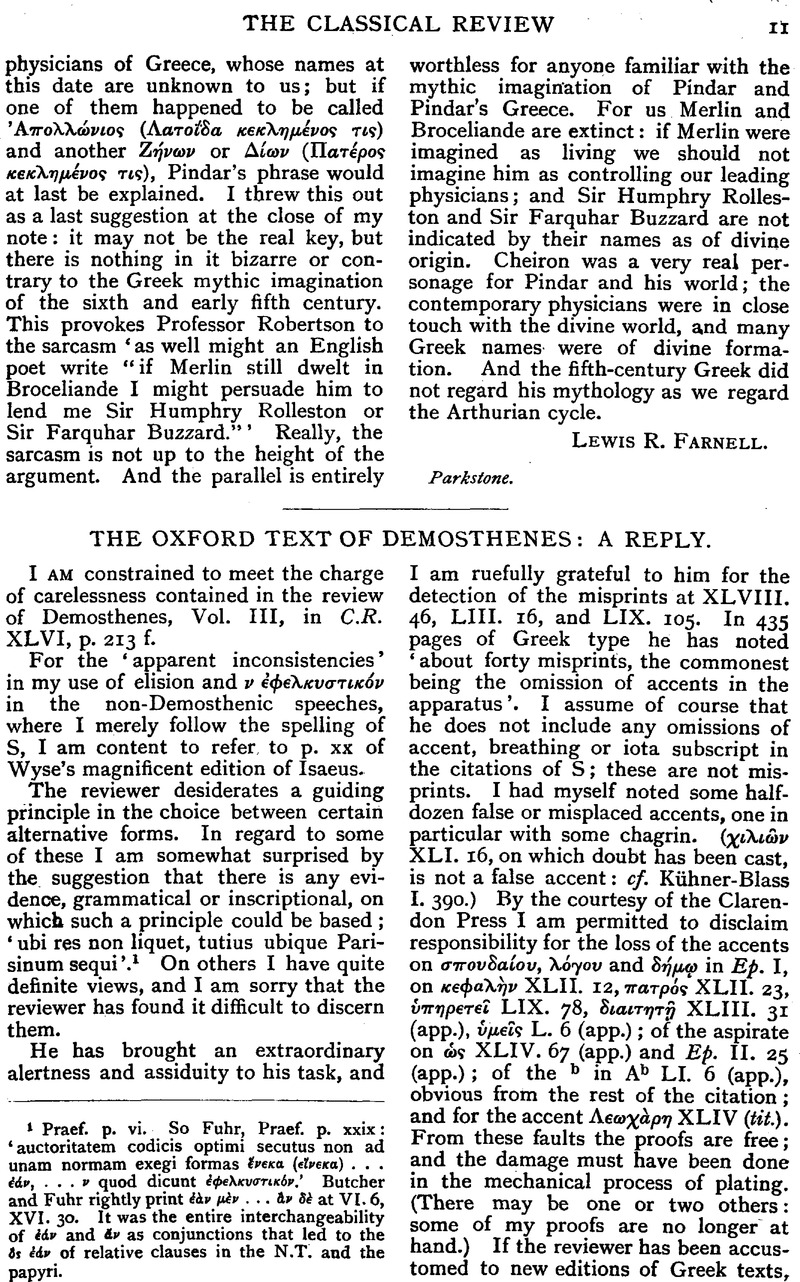No CrossRef data available.
Article contents
The Oxford Text of Demosthenes: A Reply
Published online by Cambridge University Press: 27 October 2009
Abstract

- Type
- Review Article
- Information
- Copyright
- Copyright © The Classical Association 1933
References
page 11 note 1 Praef. p. vi. So Fuhr, Praef. p. xxix: ‘ auctoritatemcodicis optimi secutus non ad unam normam exegi formas ἔvεκα (εἵνεκα)… v, …ν quod dicunt φελκυστικv.’ Butcher and Fuhr rightly print ὑν μν … ἂν δ at VI. XVI. 30. It was the entire interchangeability of and ἃν as conjunctions that led to the δς ν of relative clauses in theN.T. and the papyri.
page 12 note 1 LXI. 31 ![]() SFYrD is only an apparent exception. ζηλοσθαι leaps to the eye and is in all editions. The Zurich editors and Voemel haveno critical note; Bekker, Dindorf and Blass have merely δηλαι SFYOv.ζηλοσθαι seems to originate from Wolf; probably as found in Barocc. 1, a fourteenthcentury MS.
SFYrD is only an apparent exception. ζηλοσθαι leaps to the eye and is in all editions. The Zurich editors and Voemel haveno critical note; Bekker, Dindorf and Blass have merely δηλαι SFYOv.ζηλοσθαι seems to originate from Wolf; probably as found in Barocc. 1, a fourteenthcentury MS.




